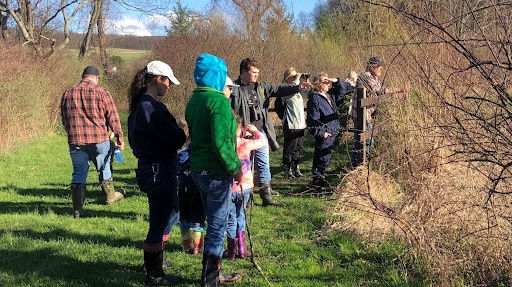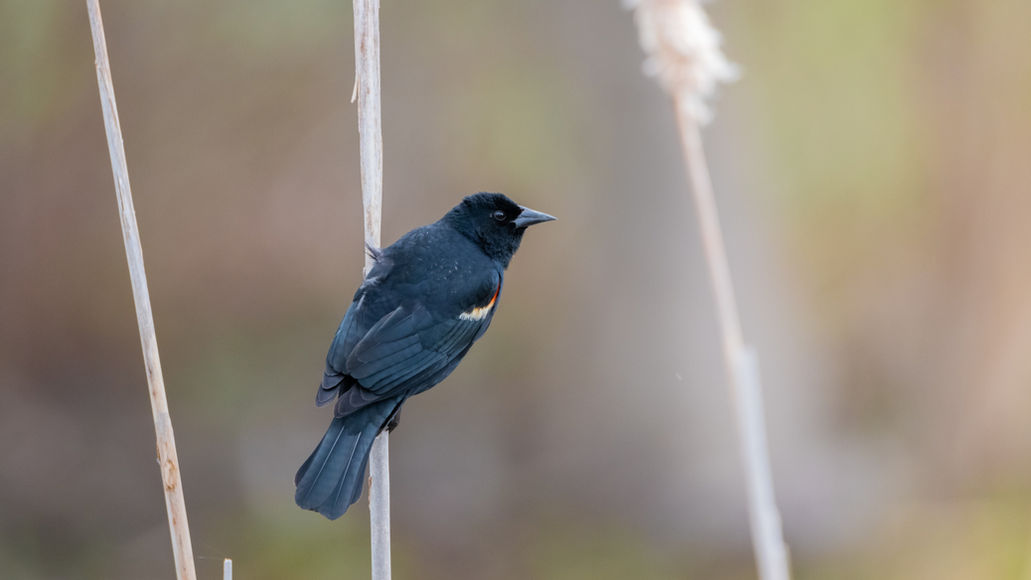Contact Us : (724) 613-2592

What is a Wetland?
Meadowbrook Rd, Mt Pleasant, PA 15666
A wetland is exactly what it’s name implies; land that is wet for all of or a significant portion of the year. As a result, this umbrella term can apply to a wide variety of different locations on our planet. Wetlands are important habitats for huge numbers of species and also function as natural buffers for rivers, lakes, and oceans from the effects of sediment, excess nutrients, and pollution.
The Jacobs Creek Educational Wetlands are a PennDOT wetland reclamation area located in on the northernmost border of Fayette County along Meadowbrook Rd. (a closed roadway off of White Bridge Rd.) in Bullskin Township. This area was developed into a wetland complex with the help of JCWA as part of PennDOT’s requirement to reconstruct new wetlands when they remove portions of existing wetlands for infrastructure. On the site, a series of 8 man-made basins have become home to a diverse ecosystem of wetland plants, insects, amphibians, reptiles, birds, and mammals.
The property is open to the public year-round for recreational use, and is a great spot for birdwatching, fishing, ‘herping’ (looking for reptiles and amphibians), wildflowers, and just enjoying nature!
Explore the wetlands on your own or join us for a Wetland Walk program!
Types of Wetlands

Inland Wetlands, like those found at the Jacobs Creek Educational Wetlands, are primarily freshwater ecosystems forming in low-lying areas, on river floodplains, or along the margins of lakes.In Pennsylvania, we are most familiar with a wetland type called a Marsh. Marshes are by far the most common type of inland wetland, and are among the most productive and diverse ecosystems on the planet! Marshes are flooded or partially flooded year-round, and are dominated by plants like cattails, bulrushes, and lily pads that build up over many years to form rich organic soils. Marsh plants are also excellent at filtering out excess nutrients and sediment from runoff before it enters streams and lakes. Not only does this prevent the larger body of water from becoming polluted, but it often means more growth in the wetland itself!
Inland Wetlands

Bogs
Other wetlands called Bogs and Fens are dominated by a plant called peat moss, along with other unique plants. Bogs get their water and nutrients from rainwater, and their acidic waters are home to unique and hardy plants like cottongrass, cranberries, and carnivorous pitcher plants! Fens are similar to bogs but they source their water from the water table below ground, giving them more nutrients and less acidic soils to allow more plants to grow like.
Spruce Flats Bog
Westmoreland County, PA

Swamps are a wetland type dominated by woody plants, often water-loving trees like Cyprus, Tupelo, and Red Maple or shrubs like Buttonbush and Silky Dogwood. Few true swamps remain in Pennsylvania, but this wetland type remains widespread across the Southeastern United States. Southern swamps are home to many unique animals including American Alligator, Barred Owl, Anhinga, Prothonotary Warblers, Softshell Turtles, and the presumed-extinct Ivory-billed Woodpecker.
Swamps

Vernal Pools
Lastly, Vernal Pools are a type of wetland common in hilly regions of the Appalachian Mountains, and are formed when rainwater or snowmelt fills depressions to create a temporary pool of standing water. Though they may look like a pond, vernal pools are only filled with water for a portion of the year, usually in the spring following snowmelt, and evaporate by summer. While this prevents animals like fish to live in these pools, vernal pools provide the ideal, low-predator breeding habitat for amphibians like Spotted Salamanders, Jefferson’s Salamanders, and Wood Frogs.

Coastal Wetlands are different from inland wetlands in that they form where land meets saltwater in the oceans, often in backwater areas or at the mouths of rivers. Also called Saltmarshes, only a few specialized plants can survive in coastal wetlands like Spartina cord-grass and Salicornia saltwort. Many species of bird like Clapper Rail, Saltmarsh Sparrow, and Snowy Egret rely heavily on saltmarshes for food and breeding habitat. Another unique coastal wetland type is the Mangrove Swamp, where the tangled roots of the Mangrove trees provide invaluable habitat for baby fish and ocean invertebrates.
Saltmarsh
Brunswick County, NC
Costal Wetlands
Other Educational Programs
WETLAND WALKS
April, May, June
The newest of JCWA’s programs, Wetland Walks are targeted at an older audience to explore the Jacobs Creek Wetlands. Attendees can learn about why wetland ecosystems are important for biodiversity and the overall health of a watershed. They’ll also get up-close encounters with the wide variety of unique birds, amphibians, reptiles, mammals, insects, and plants that call our wetland home!
In order to ensure we have the best encounters with wildlife, Wetland Walks have a limited availability and preregistration is required. See our Facebook or search “Jacobs Creek Watershed” on Eventbrite.com for dates and registration!
Or click here to Learn More about Wetlands
MACRO MONDAYS
October, November, March, April
These events showcase some of the lesser-known creatures of the creek, the Macroinvertebrates! Macroinvertebrates are any animal in the creek with 1) no backbone that are 2) visible with the naked eye. Participants will don a set of waders to sample the streambed for a variety of insect larvae, crustaceans, snails, and more! Not only does this event series give participants a chance to learn about the complex dynamics of macroinvertebrate communities and their relationship to water quality, but it also helps JCWA maintain a record of biodiversity to inform our future projects and decisions on the creek.
See our Facebook or search “Jacobs Creek Watershed” on Eventbrite.com for dates and registration! Or click here to learn more about Macroinvertebrates.
STARGAZING
October
With its relative isolation and dark skies, Greenlick Run Lake provides a great venue for amateur astronomy! Hear guest lectures on astronomy topics and use JCWA’s telescopes to peer into the night sky.
No current dates for this program are planned. See our Facebook for updates










